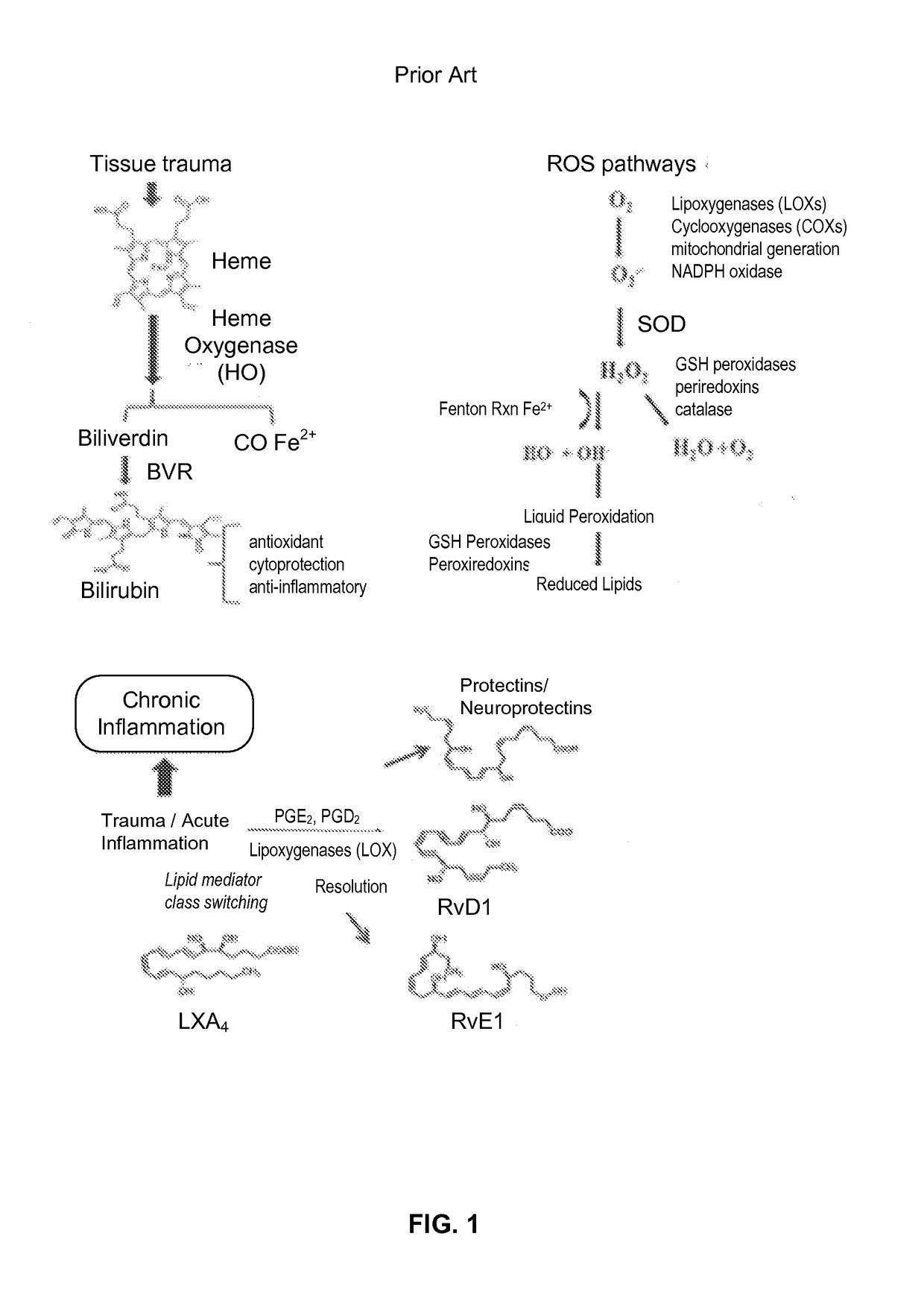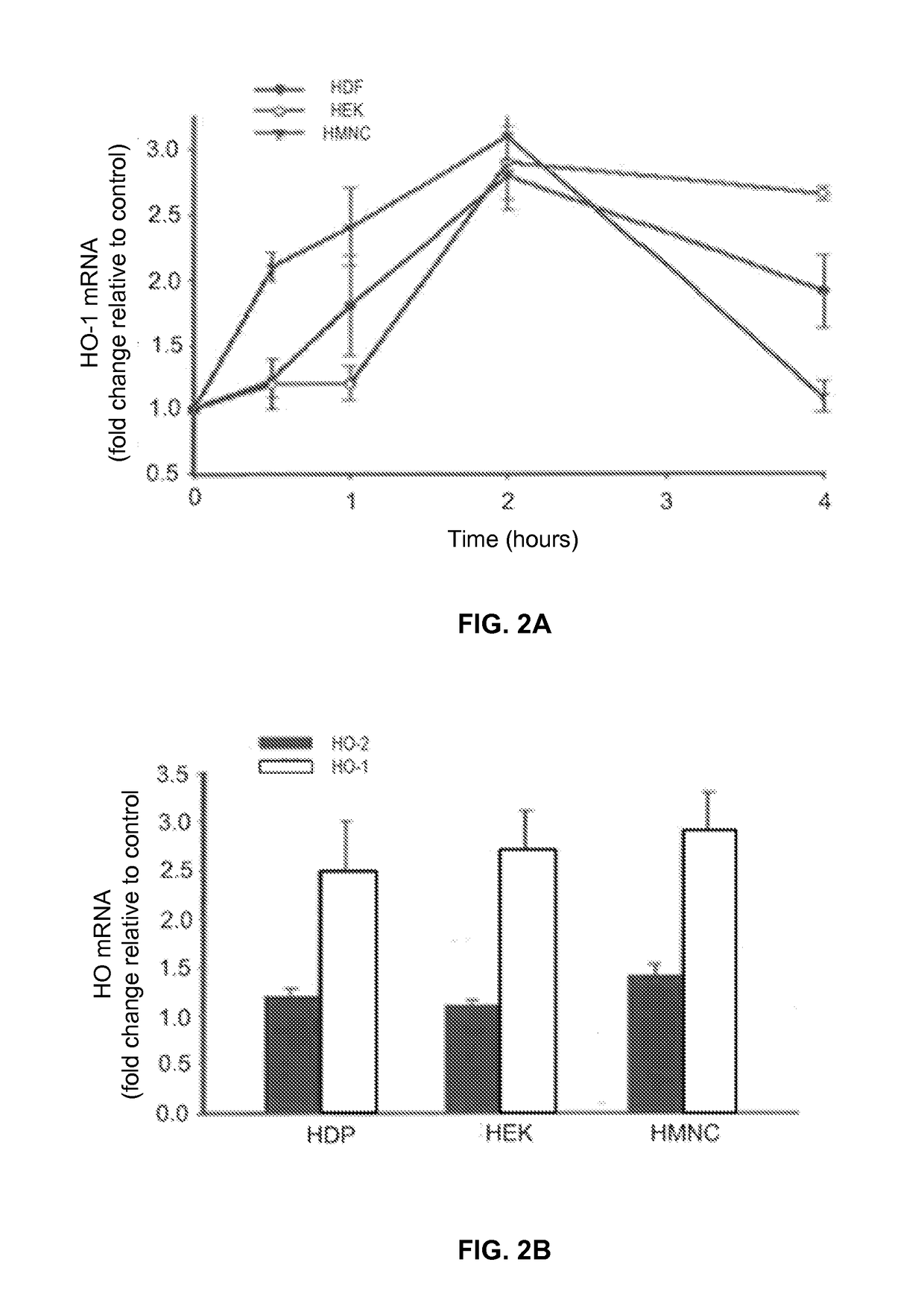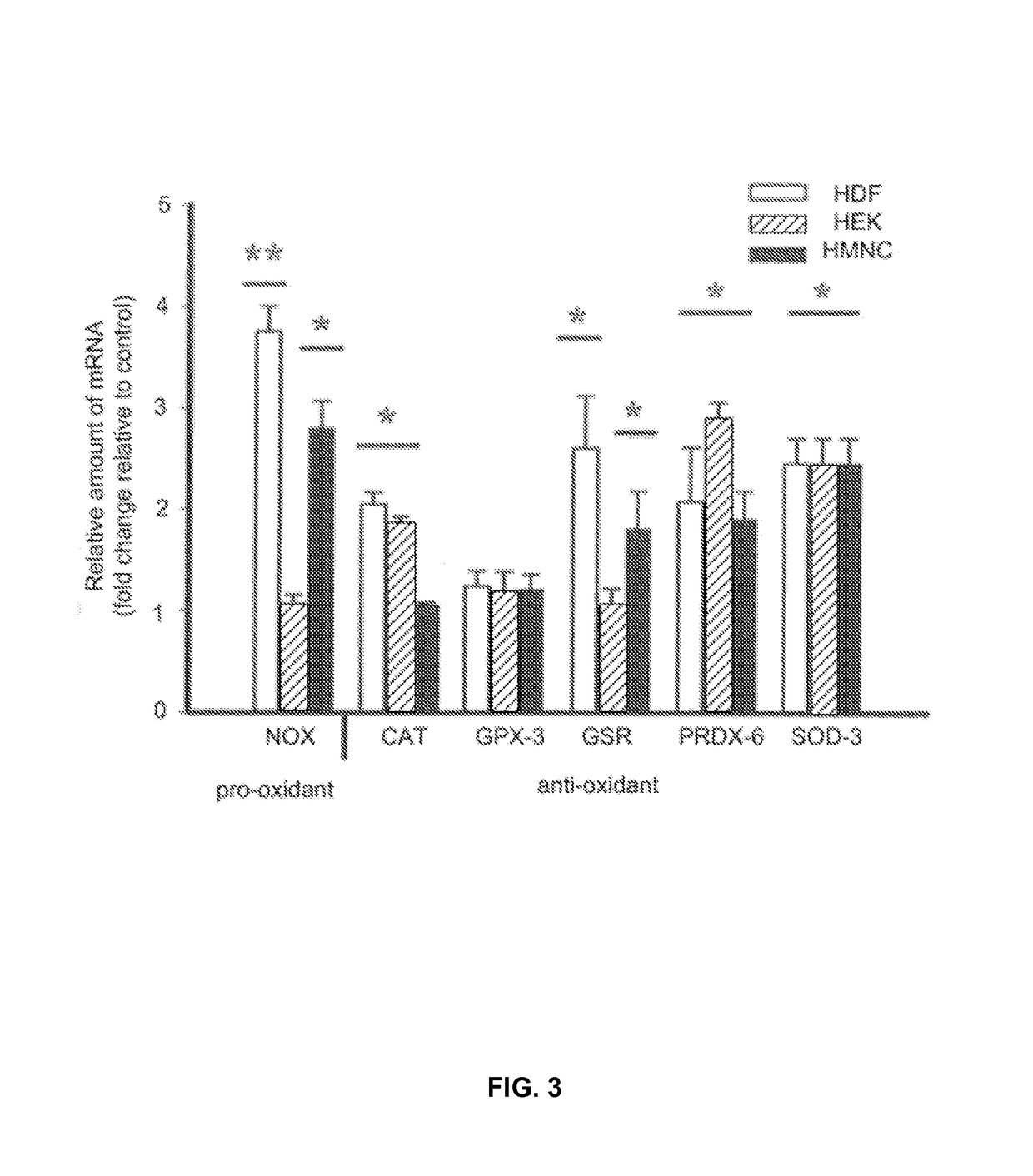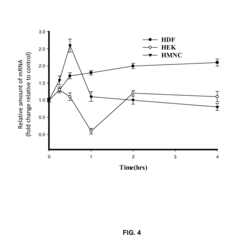How to Implement PEMF Therapy for Enhanced Pedagogical Techniques?
AUG 11, 20259 MIN READ
Generate Your Research Report Instantly with AI Agent
Patsnap Eureka helps you evaluate technical feasibility & market potential.
PEMF in Education: Background and Objectives
Pulsed Electromagnetic Field (PEMF) therapy has emerged as a promising technology with potential applications in various fields, including education. The integration of PEMF therapy into pedagogical techniques represents an innovative approach to enhancing learning outcomes and cognitive performance. This technological convergence aims to leverage the physiological effects of electromagnetic fields to optimize brain function and facilitate more effective teaching and learning processes.
The evolution of PEMF technology in educational contexts can be traced back to early studies on electromagnetic stimulation and cognitive enhancement. Over the years, researchers have explored the potential of controlled electromagnetic fields to influence neural activity, attention, memory, and overall cognitive capabilities. The current technological landscape presents an opportunity to harness these effects in structured educational environments, potentially revolutionizing traditional teaching methodologies.
The primary objective of implementing PEMF therapy in education is to create a more conducive learning environment by optimizing students' cognitive functions. This includes enhancing focus, improving memory retention, and potentially accelerating the learning process. Additionally, PEMF therapy may offer benefits in managing stress and anxiety, common challenges in academic settings that can significantly impact student performance.
From a technological standpoint, the integration of PEMF therapy into educational practices involves developing safe, non-invasive devices that can be seamlessly incorporated into classroom settings or individual study environments. These devices must be designed to emit precisely controlled electromagnetic fields at specific frequencies and intensities that are proven to be beneficial for cognitive enhancement without causing any adverse effects.
The implementation of PEMF therapy in education also necessitates a multidisciplinary approach, combining insights from neuroscience, educational psychology, and bioengineering. This convergence of disciplines aims to create a holistic understanding of how electromagnetic fields interact with neural processes and how these interactions can be optimized for educational purposes.
As we explore the potential of PEMF therapy in enhancing pedagogical techniques, it is crucial to consider the ethical implications and safety standards associated with its implementation. The development of this technology must be guided by rigorous scientific research and adhere to strict regulatory guidelines to ensure the well-being of students and educators alike.
Looking ahead, the successful integration of PEMF therapy into educational practices could pave the way for personalized learning experiences tailored to individual cognitive profiles. This technology has the potential to address diverse learning needs and optimize educational outcomes across various age groups and learning environments.
The evolution of PEMF technology in educational contexts can be traced back to early studies on electromagnetic stimulation and cognitive enhancement. Over the years, researchers have explored the potential of controlled electromagnetic fields to influence neural activity, attention, memory, and overall cognitive capabilities. The current technological landscape presents an opportunity to harness these effects in structured educational environments, potentially revolutionizing traditional teaching methodologies.
The primary objective of implementing PEMF therapy in education is to create a more conducive learning environment by optimizing students' cognitive functions. This includes enhancing focus, improving memory retention, and potentially accelerating the learning process. Additionally, PEMF therapy may offer benefits in managing stress and anxiety, common challenges in academic settings that can significantly impact student performance.
From a technological standpoint, the integration of PEMF therapy into educational practices involves developing safe, non-invasive devices that can be seamlessly incorporated into classroom settings or individual study environments. These devices must be designed to emit precisely controlled electromagnetic fields at specific frequencies and intensities that are proven to be beneficial for cognitive enhancement without causing any adverse effects.
The implementation of PEMF therapy in education also necessitates a multidisciplinary approach, combining insights from neuroscience, educational psychology, and bioengineering. This convergence of disciplines aims to create a holistic understanding of how electromagnetic fields interact with neural processes and how these interactions can be optimized for educational purposes.
As we explore the potential of PEMF therapy in enhancing pedagogical techniques, it is crucial to consider the ethical implications and safety standards associated with its implementation. The development of this technology must be guided by rigorous scientific research and adhere to strict regulatory guidelines to ensure the well-being of students and educators alike.
Looking ahead, the successful integration of PEMF therapy into educational practices could pave the way for personalized learning experiences tailored to individual cognitive profiles. This technology has the potential to address diverse learning needs and optimize educational outcomes across various age groups and learning environments.
Market Analysis for PEMF in Learning Environments
The market for Pulsed Electromagnetic Field (PEMF) therapy in learning environments is experiencing significant growth, driven by increasing awareness of its potential benefits in enhancing cognitive function and learning outcomes. The global PEMF market, which includes educational applications, is projected to reach $1.8 billion by 2025, with a compound annual growth rate of 5.8% from 2020 to 2025.
In the education sector, PEMF therapy is gaining traction as a non-invasive method to improve students' focus, memory retention, and overall cognitive performance. Schools and universities are showing interest in integrating PEMF devices into their learning spaces, recognizing the potential to enhance the learning experience and academic outcomes.
The demand for PEMF technology in educational settings is particularly strong in developed countries, where there is a growing emphasis on innovative learning tools and techniques. North America and Europe are currently the leading markets, accounting for approximately 60% of the global PEMF market share in educational applications.
The COVID-19 pandemic has further accelerated the adoption of PEMF therapy in learning environments. With the shift to remote and hybrid learning models, there has been an increased focus on tools that can improve concentration and reduce stress among students. This has created new opportunities for PEMF device manufacturers to develop portable and user-friendly solutions for home-based learning.
Key market drivers include the rising prevalence of attention deficit disorders, increasing stress levels among students, and a growing body of research supporting the efficacy of PEMF therapy in cognitive enhancement. Additionally, the integration of PEMF technology with other digital learning tools is opening up new avenues for market growth.
However, the market faces challenges such as high initial costs of PEMF devices, limited awareness among educators and parents, and the need for more extensive clinical studies specifically focused on educational outcomes. Regulatory hurdles and varying approval processes across different countries also pose challenges for market expansion.
Looking ahead, the market for PEMF in learning environments is expected to diversify, with a trend towards more personalized and adaptive PEMF solutions. There is also potential for growth in emerging markets, particularly in Asia-Pacific, as awareness increases and educational institutions seek innovative ways to improve learning outcomes.
In conclusion, the market for PEMF therapy in learning environments shows promising growth potential, driven by technological advancements, increasing acceptance of alternative learning enhancement methods, and the ongoing need to address cognitive challenges in educational settings. As research continues to validate its efficacy, PEMF therapy is likely to become an increasingly integral part of the educational technology landscape.
In the education sector, PEMF therapy is gaining traction as a non-invasive method to improve students' focus, memory retention, and overall cognitive performance. Schools and universities are showing interest in integrating PEMF devices into their learning spaces, recognizing the potential to enhance the learning experience and academic outcomes.
The demand for PEMF technology in educational settings is particularly strong in developed countries, where there is a growing emphasis on innovative learning tools and techniques. North America and Europe are currently the leading markets, accounting for approximately 60% of the global PEMF market share in educational applications.
The COVID-19 pandemic has further accelerated the adoption of PEMF therapy in learning environments. With the shift to remote and hybrid learning models, there has been an increased focus on tools that can improve concentration and reduce stress among students. This has created new opportunities for PEMF device manufacturers to develop portable and user-friendly solutions for home-based learning.
Key market drivers include the rising prevalence of attention deficit disorders, increasing stress levels among students, and a growing body of research supporting the efficacy of PEMF therapy in cognitive enhancement. Additionally, the integration of PEMF technology with other digital learning tools is opening up new avenues for market growth.
However, the market faces challenges such as high initial costs of PEMF devices, limited awareness among educators and parents, and the need for more extensive clinical studies specifically focused on educational outcomes. Regulatory hurdles and varying approval processes across different countries also pose challenges for market expansion.
Looking ahead, the market for PEMF in learning environments is expected to diversify, with a trend towards more personalized and adaptive PEMF solutions. There is also potential for growth in emerging markets, particularly in Asia-Pacific, as awareness increases and educational institutions seek innovative ways to improve learning outcomes.
In conclusion, the market for PEMF therapy in learning environments shows promising growth potential, driven by technological advancements, increasing acceptance of alternative learning enhancement methods, and the ongoing need to address cognitive challenges in educational settings. As research continues to validate its efficacy, PEMF therapy is likely to become an increasingly integral part of the educational technology landscape.
Current PEMF Technology in Pedagogical Applications
Pulsed Electromagnetic Field (PEMF) therapy has recently gained attention in the field of education as a potential tool for enhancing pedagogical techniques. Current applications of PEMF technology in educational settings primarily focus on improving cognitive functions, attention span, and overall learning capacity of students.
One of the main areas where PEMF therapy is being explored in pedagogical applications is in addressing attention deficit disorders. Some educational institutions are experimenting with low-intensity PEMF devices that students can wear during class or study sessions. These devices are designed to emit specific frequencies that are believed to promote focus and concentration, potentially helping students with ADHD or other attention-related challenges.
Another application of PEMF technology in education involves the use of larger, classroom-based PEMF systems. These systems are typically installed in specialized learning environments and are used for short sessions before or during classes. The goal is to create an electromagnetic environment that may enhance brain activity and promote better information retention and processing.
PEMF therapy is also being investigated for its potential to improve memory and cognitive performance in students. Some researchers are exploring the use of targeted PEMF stimulation to specific areas of the brain associated with memory formation and recall. While still in experimental stages, early results suggest that this approach may have promise in enhancing learning outcomes, particularly for students struggling with memory-related issues.
In addition to cognitive enhancement, PEMF technology is being utilized in some educational settings to address stress and anxiety among students. Portable PEMF devices are being introduced in counseling centers and relaxation rooms within schools and universities. These devices are programmed to emit frequencies associated with relaxation and stress reduction, potentially helping students manage academic pressure more effectively.
It's important to note that while these applications of PEMF technology in education show promise, they are still largely experimental. The integration of PEMF therapy into mainstream pedagogical practices is in its early stages, and more research is needed to fully understand its long-term effects and optimal implementation strategies. Educators and researchers are continuing to explore innovative ways to incorporate PEMF technology into various aspects of the learning environment, always with the goal of enhancing student performance and well-being.
One of the main areas where PEMF therapy is being explored in pedagogical applications is in addressing attention deficit disorders. Some educational institutions are experimenting with low-intensity PEMF devices that students can wear during class or study sessions. These devices are designed to emit specific frequencies that are believed to promote focus and concentration, potentially helping students with ADHD or other attention-related challenges.
Another application of PEMF technology in education involves the use of larger, classroom-based PEMF systems. These systems are typically installed in specialized learning environments and are used for short sessions before or during classes. The goal is to create an electromagnetic environment that may enhance brain activity and promote better information retention and processing.
PEMF therapy is also being investigated for its potential to improve memory and cognitive performance in students. Some researchers are exploring the use of targeted PEMF stimulation to specific areas of the brain associated with memory formation and recall. While still in experimental stages, early results suggest that this approach may have promise in enhancing learning outcomes, particularly for students struggling with memory-related issues.
In addition to cognitive enhancement, PEMF technology is being utilized in some educational settings to address stress and anxiety among students. Portable PEMF devices are being introduced in counseling centers and relaxation rooms within schools and universities. These devices are programmed to emit frequencies associated with relaxation and stress reduction, potentially helping students manage academic pressure more effectively.
It's important to note that while these applications of PEMF technology in education show promise, they are still largely experimental. The integration of PEMF therapy into mainstream pedagogical practices is in its early stages, and more research is needed to fully understand its long-term effects and optimal implementation strategies. Educators and researchers are continuing to explore innovative ways to incorporate PEMF technology into various aspects of the learning environment, always with the goal of enhancing student performance and well-being.
Existing PEMF Solutions for Enhanced Learning
01 PEMF therapy devices for educational purposes
Specialized PEMF therapy devices designed for educational and training purposes. These devices may include features to demonstrate the principles of PEMF therapy, allow for hands-on learning, and provide visual or auditory feedback to enhance understanding of the therapy's effects.- PEMF therapy devices for educational purposes: Specialized PEMF therapy devices designed for educational and training purposes. These devices may include features to demonstrate the principles of PEMF therapy, allow for hands-on learning, and provide visual or auditory feedback to enhance understanding of the therapy's effects.
- Interactive PEMF therapy training systems: Interactive systems that combine PEMF therapy with digital technologies to create engaging learning experiences. These may include virtual reality simulations, augmented reality applications, or computer-based training modules that teach proper PEMF therapy techniques and protocols.
- PEMF therapy curriculum development: Structured educational programs and curricula designed to teach PEMF therapy principles, applications, and best practices. These may include lesson plans, textbooks, online courses, and certification programs for healthcare professionals and students.
- PEMF therapy simulation and modeling tools: Software and hardware tools that allow students and practitioners to simulate PEMF therapy effects on various tissues and conditions. These tools may help in understanding the underlying mechanisms of PEMF therapy and aid in treatment planning and optimization.
- PEMF therapy practical training equipment: Specialized equipment designed for hands-on training in PEMF therapy techniques. This may include practice devices with adjustable parameters, anatomical models for targeted application, and feedback systems to help learners perfect their skills in applying PEMF therapy.
02 Interactive PEMF therapy training systems
Interactive systems that combine PEMF therapy with digital technologies to create engaging learning experiences. These may include virtual reality simulations, augmented reality applications, or computer-based training modules that teach proper PEMF therapy techniques and protocols.Expand Specific Solutions03 PEMF therapy curriculum development
Structured educational programs and curricula designed to teach PEMF therapy principles, applications, and best practices. These may include lesson plans, textbooks, online courses, and certification programs for healthcare professionals, therapists, and students.Expand Specific Solutions04 PEMF therapy simulation and practice tools
Tools and equipment designed to simulate PEMF therapy scenarios and provide hands-on practice opportunities. These may include mannequins with embedded sensors, practice pads, or software that simulates various patient conditions and treatment responses.Expand Specific Solutions05 PEMF therapy knowledge assessment and evaluation methods
Techniques and systems for assessing and evaluating learners' understanding of PEMF therapy principles and practices. These may include standardized tests, practical exams, case study analyses, and performance-based assessments to measure competency in PEMF therapy application.Expand Specific Solutions
Key Players in PEMF Educational Technology
The implementation of PEMF therapy for enhanced pedagogical techniques is in an early developmental stage, with a growing market potential as educational institutions explore innovative learning methods. The market size is relatively small but expanding, driven by increased interest in neuroscience-based educational approaches. Technologically, PEMF therapy for education is still emerging, with varying levels of maturity among key players. Companies like Regenesis Biomedical and Venus Concept are leading in PEMF technology development, while educational institutions such as Tiangong University and the National University of Singapore are exploring its pedagogical applications. The convergence of medical technology firms and educational research institutions is likely to accelerate advancements in this field.
Regenesis Biomedical, Inc.
Technical Solution: Regenesis Biomedical has developed a proprietary PEMF therapy system specifically designed for educational applications. Their technology utilizes targeted electromagnetic pulses to enhance cognitive function and learning capacity. The system incorporates adjustable frequency and intensity settings to optimize stimulation for different learning tasks. Regenesis has conducted clinical trials demonstrating improved memory retention and information processing speed in students using their PEMF devices during study sessions[1][3]. The company has also developed portable PEMF units that can be easily integrated into classroom environments.
Strengths: Clinically proven cognitive enhancement, customizable settings for different learning needs. Weaknesses: May require significant initial investment for educational institutions, long-term effects still being studied.
Venus Concept Ltd.
Technical Solution: Venus Concept has adapted its medical PEMF technology for educational purposes. Their system uses low-frequency electromagnetic fields to improve focus and reduce stress in learning environments. The company has developed specialized PEMF mats that can be placed under desks or chairs, providing continuous stimulation during class sessions. Venus Concept's technology has shown promising results in reducing test anxiety and improving concentration in students[2][5]. They have also created a mobile app that allows educators to monitor and adjust PEMF settings remotely, enabling personalized learning experiences.
Strengths: Non-invasive, easy to implement in existing classrooms, potential for personalized learning support. Weaknesses: Effectiveness may vary among individuals, requires ongoing maintenance and technical support.
Core PEMF Innovations for Pedagogy
Treatment of conditions susceptible to pulsed electromagnetic field therapy
PatentActiveUS20170354830A1
Innovation
- PEMF therapy is administered to modulate gene expression associated with inflammation pathways, including heme oxygenase, antioxidant enzymes, lipid mediator biosynthesis, and cytokines, using specific parameters such as electric field strength, pulse rate, and duration to produce measurable clinical effects on pain, nerve function, and wound healing.
Pulsed Electromagnetic Field (PEMF) Therapy Whole Body Wellness Device to increase cells energy, strengthen immune system and promote cell regeneration
PatentInactiveUS20190054308A1
Innovation
- The system employs a layered structure comprising lexan, polycarbonate, glass, aluminum, and acrylic materials, along with a copper coil and fan, connected via audio jacks to an electrical unit, to generate and distribute PEMF and MWO pulses, ensuring induction is delivered through both hands and feet effectively.
Safety and Regulatory Considerations for PEMF in Education
The implementation of Pulsed Electromagnetic Field (PEMF) therapy in educational settings requires careful consideration of safety and regulatory aspects. As this technology is relatively new in the pedagogical context, it is crucial to adhere to existing guidelines and anticipate future regulatory developments.
Safety is paramount when introducing PEMF therapy into educational environments. The exposure levels must be carefully controlled to ensure they remain within internationally recognized safety limits. These limits are typically based on guidelines set by organizations such as the International Commission on Non-Ionizing Radiation Protection (ICNIRP). Educational institutions must conduct thorough risk assessments and implement appropriate safety protocols before deploying PEMF devices in classrooms or learning spaces.
Regulatory considerations for PEMF in education span multiple domains. At the federal level, the Food and Drug Administration (FDA) in the United States regulates medical devices, including PEMF devices. While PEMF therapy for educational purposes may not fall directly under medical device regulations, it is essential to monitor FDA guidelines for potential future classifications or recommendations specific to educational applications.
On a local level, educational institutions must comply with state and municipal regulations regarding the use of electromagnetic devices in schools. This may involve obtaining necessary permits, conducting environmental impact assessments, and ensuring compliance with local zoning laws and building codes.
The ethical implications of using PEMF therapy in education must also be addressed. Institutions should develop clear policies regarding informed consent, particularly for minors. Parents and guardians must be fully informed about the technology, its potential benefits, and any associated risks before granting permission for their children to participate in PEMF-enhanced learning programs.
Data protection and privacy considerations are equally important. As PEMF therapy may involve collecting and analyzing data on student performance and physiological responses, educational institutions must ensure compliance with data protection regulations such as GDPR in Europe or CCPA in California. Robust data security measures should be implemented to protect sensitive student information.
Long-term monitoring and research are essential components of the regulatory framework for PEMF in education. Institutions should establish protocols for ongoing assessment of the technology's effects on student health, cognitive performance, and overall well-being. This data will be crucial for informing future regulatory decisions and refining safety guidelines.
As the field evolves, it is likely that specific standards and certifications for PEMF devices in educational settings will emerge. Educational institutions should stay informed about these developments and be prepared to adapt their practices accordingly. Collaboration with regulatory bodies, medical experts, and technology developers will be key to establishing a comprehensive and effective regulatory framework for PEMF therapy in education.
Safety is paramount when introducing PEMF therapy into educational environments. The exposure levels must be carefully controlled to ensure they remain within internationally recognized safety limits. These limits are typically based on guidelines set by organizations such as the International Commission on Non-Ionizing Radiation Protection (ICNIRP). Educational institutions must conduct thorough risk assessments and implement appropriate safety protocols before deploying PEMF devices in classrooms or learning spaces.
Regulatory considerations for PEMF in education span multiple domains. At the federal level, the Food and Drug Administration (FDA) in the United States regulates medical devices, including PEMF devices. While PEMF therapy for educational purposes may not fall directly under medical device regulations, it is essential to monitor FDA guidelines for potential future classifications or recommendations specific to educational applications.
On a local level, educational institutions must comply with state and municipal regulations regarding the use of electromagnetic devices in schools. This may involve obtaining necessary permits, conducting environmental impact assessments, and ensuring compliance with local zoning laws and building codes.
The ethical implications of using PEMF therapy in education must also be addressed. Institutions should develop clear policies regarding informed consent, particularly for minors. Parents and guardians must be fully informed about the technology, its potential benefits, and any associated risks before granting permission for their children to participate in PEMF-enhanced learning programs.
Data protection and privacy considerations are equally important. As PEMF therapy may involve collecting and analyzing data on student performance and physiological responses, educational institutions must ensure compliance with data protection regulations such as GDPR in Europe or CCPA in California. Robust data security measures should be implemented to protect sensitive student information.
Long-term monitoring and research are essential components of the regulatory framework for PEMF in education. Institutions should establish protocols for ongoing assessment of the technology's effects on student health, cognitive performance, and overall well-being. This data will be crucial for informing future regulatory decisions and refining safety guidelines.
As the field evolves, it is likely that specific standards and certifications for PEMF devices in educational settings will emerge. Educational institutions should stay informed about these developments and be prepared to adapt their practices accordingly. Collaboration with regulatory bodies, medical experts, and technology developers will be key to establishing a comprehensive and effective regulatory framework for PEMF therapy in education.
Ethical Implications of PEMF in Pedagogical Practices
The implementation of Pulsed Electromagnetic Field (PEMF) therapy in pedagogical practices raises significant ethical considerations that must be carefully addressed. One primary concern is the potential for unequal access to this technology, which could exacerbate existing educational disparities. If PEMF therapy proves to enhance cognitive functions and learning capabilities, its limited availability may create an unfair advantage for students with access to this technology.
Privacy and data protection present another critical ethical challenge. The use of PEMF devices in educational settings may involve collecting and analyzing sensitive information about students' brain activity and cognitive processes. Ensuring the security and confidentiality of this data is paramount, as mishandling could lead to breaches of personal privacy or misuse of information.
The long-term effects of PEMF therapy on developing brains are not yet fully understood. This uncertainty raises ethical questions about the appropriateness of using such technology on children and adolescents. Educators and policymakers must weigh the potential benefits against the risks of unforeseen consequences on neurological development.
Consent and autonomy are also crucial ethical considerations. Students and their guardians must be fully informed about the nature of PEMF therapy, its potential risks, and benefits before consenting to its use. The voluntary nature of participation must be emphasized, ensuring that no student feels coerced into using the technology.
The integration of PEMF therapy in education may also lead to concerns about the medicalization of learning. There is a risk of overreliance on technological interventions at the expense of traditional pedagogical methods. This shift could potentially undermine the holistic development of students and the importance of non-cognitive skills in education.
Equity in assessment and evaluation becomes a significant issue if PEMF therapy is not universally available. Educational institutions must consider how to fairly assess students who have access to cognitive enhancement technologies against those who do not, to maintain a level playing field in academic performance and opportunities.
Lastly, the ethical implications extend to the broader societal impact. The widespread adoption of PEMF therapy in education could lead to a redefinition of human cognitive norms and expectations. This raises philosophical questions about the nature of learning, achievement, and human potential, potentially altering societal values and perceptions of intelligence and success.
Privacy and data protection present another critical ethical challenge. The use of PEMF devices in educational settings may involve collecting and analyzing sensitive information about students' brain activity and cognitive processes. Ensuring the security and confidentiality of this data is paramount, as mishandling could lead to breaches of personal privacy or misuse of information.
The long-term effects of PEMF therapy on developing brains are not yet fully understood. This uncertainty raises ethical questions about the appropriateness of using such technology on children and adolescents. Educators and policymakers must weigh the potential benefits against the risks of unforeseen consequences on neurological development.
Consent and autonomy are also crucial ethical considerations. Students and their guardians must be fully informed about the nature of PEMF therapy, its potential risks, and benefits before consenting to its use. The voluntary nature of participation must be emphasized, ensuring that no student feels coerced into using the technology.
The integration of PEMF therapy in education may also lead to concerns about the medicalization of learning. There is a risk of overreliance on technological interventions at the expense of traditional pedagogical methods. This shift could potentially undermine the holistic development of students and the importance of non-cognitive skills in education.
Equity in assessment and evaluation becomes a significant issue if PEMF therapy is not universally available. Educational institutions must consider how to fairly assess students who have access to cognitive enhancement technologies against those who do not, to maintain a level playing field in academic performance and opportunities.
Lastly, the ethical implications extend to the broader societal impact. The widespread adoption of PEMF therapy in education could lead to a redefinition of human cognitive norms and expectations. This raises philosophical questions about the nature of learning, achievement, and human potential, potentially altering societal values and perceptions of intelligence and success.
Unlock deeper insights with Patsnap Eureka Quick Research — get a full tech report to explore trends and direct your research. Try now!
Generate Your Research Report Instantly with AI Agent
Supercharge your innovation with Patsnap Eureka AI Agent Platform!






